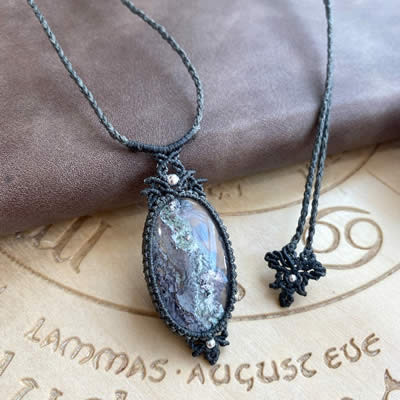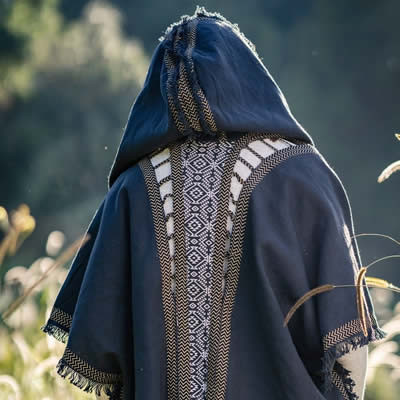Rainbow Family Gatherings are more than just events; they are vibrant expressions of a utopian ideal, bringing together individuals from across the globe who share a vision of peace, unity, and freedom. Unlike typical festivals, a Rainbow Gathering is an immersive experience, a temporary community built on principles of non-violence, sharing, and living in harmony with nature.
Imagine a place, often nestled in a remote forest or secluded natural setting, where people gather to escape the pressures of modern society. Here, capitalism and materialism take a backseat to shared experiences, creativity, and a profound sense of togetherness. Participants, often referred to as the Rainbow Family, engage in singing, dancing, collaborative cooking, skill-sharing workshops, and countless spontaneous acts of art and community building. It’s all done in the spirit of creating one large, interconnected family.
While there are numerous Rainbow Gatherings happening worldwide, catering to regional communities and interests, the most significant is the annual World Rainbow Gathering. Regardless of location, every Rainbow Family gathering embodies the same core values: positive energy, deep unity, and a profound sense of personal and collective freedom. These gatherings offer a unique opportunity to step outside the mainstream and experience an alternative way of living, even if just for a short time.
Embracing a Utopian Lifestyle
Rainbow Family Gatherings are essentially temporary utopian societies, where loosely connected individuals come together to live and share ideals of freedom, peace, and harmony, deeply rooted in nature. Many participants see these gatherings as more than just social events; they view them as a manifestation of a burgeoning global consciousness, a step towards a new era for humanity, echoing ancient prophecies of renewal and harmonious living.
What sets Rainbow Gatherings apart is their unique structure and ethos. There is no commerce, no alcohol is sold, and remarkably, no single leader or authority figure dictates proceedings. This truly embodies a utopian ideal in practice. A common saying within the Rainbow Gathering sums up its operational philosophy: “If you see a need, it’s your calling!” This principle of voluntary action and shared responsibility is fundamental to how these communities function.
The Organic Structure of a Rainbow Family Gathering
Typically, a Rainbow Gathering spans an entire lunar cycle, roughly a month, although the duration can vary. These gatherings intentionally avoid permanent festival grounds, choosing instead to relocate each time, often within national forests or other publicly accessible natural areas around the world, with a strong presence in both the USA and Europe.
Each gathering naturally evolves a rhythm of shared activities, including creative workshops, music circles around campfires, open discussions, and collaborative art projects. The spirit of spontaneity and shared contribution shapes the daily experience for everyone involved.
Beyond regional and national Rainbow Family gatherings, the European Rainbow Gathering moves to a different European country annually, fostering international connection within the continent. The World Rainbow Gathering is considered the most significant event, having been hosted in diverse locations such as Brazil, Thailand, China, New Zealand, and Ethiopia, truly making it a global phenomenon.
For those considering participation, it’s essential to understand that Rainbow Gatherings operate without formal leadership, hierarchical structures, or official spokespeople. The guiding principles are love, non-violence, non-consumerism, volunteerism, and multicultural inclusivity. Notably, the use of money within the gathering is generally discouraged, emphasizing a gift economy and bartering system.
Core Values: The Heart of the Rainbow Gathering
The ethos of the Rainbow Gathering traces back to the original invitation for the first gathering in the USA in 1971. The “Rainbow Family Tribe” envisioned themselves as a global family, “brothers and sisters, the children of God,” and “Families of life on Earth.” This initial call was an invitation to all nations and peoples to come together in peace, transcending political and racial divides. The aim was to cultivate a culture that rejected capitalism, consumerism, and the pervasive influence of mass media, advocating for a utopian, non-hierarchical model that could inspire broader societal change towards peace and sustainability.
Deeply influenced by the counterculture movement of the 1960s, Rainbow Gatherings represent a form of non-commercial festival, a “revitalization movement” drawing from 19th-century utopian philosophies. They seek to create a space where these values can be lived and experienced collectively.
However, like any movement evolving over time, Rainbow Gatherings face challenges. In recent decades, some gatherings have seen incidents that organizers feel deviate from the core principles, with concerns raised about the gatherings becoming more mainstream in an attempt to broaden appeal, potentially diluting their original values. This ongoing evolution and the commitment to maintaining core values are part of the ongoing dialogue within the Rainbow Family community.
A Look Back: The History of the Rainbow Family Gathering
The inaugural Rainbow Gathering of the Tribes took place in 1972 in Colorado, USA. Organized by youth counterculture groups from Northern Carolina and the Pacific Northwest, the four-day event drew over 20,000 participants, exceeding all expectations and marking the beginning of a significant cultural phenomenon.
Initially intended as a one-off event, the powerful sense of community and shared vision led to a second gathering in Wyoming the following year. From there, the Rainbow Gathering evolved into an annual tradition, expanding in both duration and the frequency of events worldwide. What started as a small, localized gathering has grown into a global movement, reflecting a persistent desire for alternative community and values.
Navigating Media Perceptions and Misconceptions
Media portrayals of Rainbow Gatherings have often been mixed, particularly since the 1980s. Early coverage sometimes depicted Rainbow Family members with stereotypes like “aging hippies” or “grown-up flower children,” often overlooking the deeper intentions and values of the gatherings.
In the 2000s, media focus shifted towards negative narratives, emphasizing crime incidents in communities near gathering locations. Issues ranging from minor offenses to more serious charges were often attributed to Rainbow Gathering participants, contributing to a skewed and often unfair public perception.
Despite the movement’s core ideology of peace and non-violence, media outlets have sometimes portrayed participants as associated with drug and alcohol abuse, disruptive behavior, and cultural appropriation, particularly concerning Native American spiritual practices. These negative portrayals have unfortunately led to increased police presence at gatherings and strained relationships with some local communities and businesses. These challenges have, in some regions, contributed to a decline in attendance, highlighting the ongoing need for accurate representation and understanding of the Rainbow Gathering ethos.
Despite these challenges, Rainbow Gatherings remain profoundly unique and potentially transformative experiences. Across the globe, they continue to embody the principles of love, unity, and freedom. For a span of weeks, these temporary communities offer a glimpse into a utopian world, an experience many believe everyone should encounter at least once in their lifetime.
Finding Your Way: Rainbow Gathering Location
Pinpointing a precise Rainbow Gathering location can be intentionally challenging, as there is no fixed site. Since the first gathering in Colorado in 1972, locations have varied yearly. In the USA, gatherings typically occur within or near National Forests, leveraging public lands for their events.
Similarly, both European and World Rainbow Gatherings move to different countries each year, alongside numerous smaller national and regional events. This nomadic nature is part of the ethos, aiming to minimize environmental impact on any single location and to explore different natural settings.
The unifying factor across all Rainbow Family gatherings is their commitment to remote, natural locations, away from the distractions and constraints of modern society. This intentional seclusion is key to fostering the immersive and unique atmosphere that defines the Rainbow Gathering experience.
To find information on upcoming Rainbow Gatherings, especially regarding specific locations, it’s best to consult online Rainbow Family guides and forums. These community-driven resources often provide the most current and detailed information, as there are no centralized official announcements in the traditional sense.
Rainbow Gathering: A Visual Journey
[Image Gallery showcasing various aspects of Rainbow Gathering life – people cooking together, music and dance, children playing, art installations, and natural landscapes].
[Embedded videos showcasing Rainbow Gathering documentaries and event highlights]
Rainbow Gathering 2018 Highlights
Frequently Asked Questions About Rainbow Family Gatherings
❓ Where exactly is a Rainbow Family Gathering located?
Rainbow Family Gatherings are intentionally nomadic and do not have a fixed location. They occur in various places around the world, typically in remote, natural settings, away from mainstream civilization.
❓ How large are Rainbow Family Gatherings?
The size of a Rainbow Family Gathering can vary significantly, with some events hosting over 30,000 people. Attendance depends on the specific event and location, with no set limits on participant numbers.
❓ How can I get to a Rainbow Family Gathering?
Reaching a Rainbow Family Gathering requires individual planning, as there are no official transportation services. Online forums and community resources are the best places to find tips and information on how to reach specific gatherings, often involving personal travel arrangements to remote locations.
❓ What is the duration of a Rainbow Family Gathering?
The length of a Rainbow Family Gathering varies, although a typical duration is around a month, coinciding with a full lunar cycle. The original gatherings were shorter, but have expanded over time to allow for deeper community building and experience.
❓ What facilities are available at a Rainbow Family Gathering?
Facilities are basic and community-managed. Expect shared camps and kitchens organized around dietary preferences or regional groups. Food is typically communal, with options for various diets (including vegan and vegetarian). Water is available, but boiling for drinking is recommended. Sanitation is basic, and while there are volunteer medics and first aid stations, self-reliance is key. Some gatherings include designated areas like a Kid’s Village for families or spiritual camps, depending on the community and the specific event’s organic development. Community peace-keeping, conflict resolution, and emergency situations are managed by volunteer groups known as “Shanti Sena” or peacekeepers.






